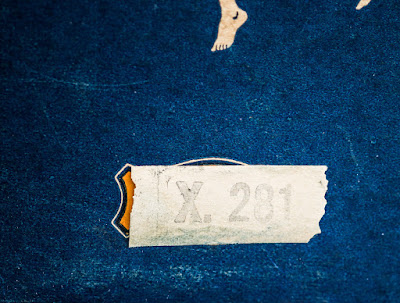This month is rectifier time. Let's have a look at the ancient 81.
The type 80, 82, 83 and 84 have already been covered in the past, the only number missing in this line up is the 81. So I decided to pull out my small stock and present them today.
 The 81 is a half wave rectifier tube. This means it only contains a single diode. For full wave rectification two of them are needed, or even 4 for a full wave bridge arrangement. The 81 is a very early rectifier tube. It is the successor of the UX-216 which was only briefly made. It was introduced as the UX-281 (or CX-381 by Cunningham). It is a directly heated rectifier with a 7.5V filament which consumes 1.25V. These values are suspiciously identical to those of the 50. So it probably was nothing else but a 50 without control grid. As with other directly heated rectifiers, the internal voltage drop is rather high. Up to 85mA can be drawn from a 81 which doubles to 170mA when two are used for full wave rectification. Refer to the RCA data sheet for all technical details. The 81 is an impressive tube which comes in the same bulb size as the 50. A bridge with 4 of them would be quite a sight. I never used any 81s in an amplifier since my preferred rectifiers are TV dampers. Nonetheless this is a great looking tube, especially in the globe shape.
The 81 is a half wave rectifier tube. This means it only contains a single diode. For full wave rectification two of them are needed, or even 4 for a full wave bridge arrangement. The 81 is a very early rectifier tube. It is the successor of the UX-216 which was only briefly made. It was introduced as the UX-281 (or CX-381 by Cunningham). It is a directly heated rectifier with a 7.5V filament which consumes 1.25V. These values are suspiciously identical to those of the 50. So it probably was nothing else but a 50 without control grid. As with other directly heated rectifiers, the internal voltage drop is rather high. Up to 85mA can be drawn from a 81 which doubles to 170mA when two are used for full wave rectification. Refer to the RCA data sheet for all technical details. The 81 is an impressive tube which comes in the same bulb size as the 50. A bridge with 4 of them would be quite a sight. I never used any 81s in an amplifier since my preferred rectifiers are TV dampers. Nonetheless this is a great looking tube, especially in the globe shape.Above a selection of Cunningham globe shape CX-381 tubes.
And here one of them in all it's glory.
Some details:
Here we have one with the test label still attached:
This one is heavily used as can be identified by the getter which is almost entirely consumed:
Next we have a Marathon branded 281:
The box actually has a X-250 marking with a label X-281 glued on, so they did not have to print specific boxes for the 281:
Unfortunately the tube inside the box had the internal system tilted to the side. It probably got a hit:
This is quite common with globe tubes which do not have any support of the internals at the top.
Airex branded tube:
Next we have a United branded tube:
Not to be confused with United Electric.
Probably made by RCA, but the engraving on the base was scraped off.
Some more details:
In the 1930s the globe shape was abandoned in favour of the more modern ST sytle.
Here a RCA 81.
And lastly a Triad 81:
This one looks identical to the RCA above, so probably just rebranded.
A CX381 with the filament lit up:
Close Up:
As with all directly heated tubes and especially in rectifiers the filaments are very visible.
What a great tube which is almost never seen in any new amplifier builds. I hope you enjoyed the presentation.
Best regards
Thomas





















































it was the rectifier of the famous Loftin & XWhite amp ...
ReplyDeleteHi Thomas and thanks for that. I'm about to design and build and amp using 2 CX381s for the power tube PSU (the customer loves to see Cunningham tubes). Do they need separate heater windings or is a single winding applied to the filaments in parallel OK ?
ReplyDeleteWhoa this is an extremely basic question. Yes you can wire them in parallel. I strongly advice to read some electronic basics
DeleteNo sorry - please ignore that question. The filament windings must be separate because the primary transformer voltage is between them.
ReplyDeleteActually, no if you build a FW rectifier with 2 tubes one winding is enough
DeleteYes a not very common tube. I think I've it seen it in only one place, as the anode supply for the CRT in a very old oscilloscope. Rather weird as your basic 2X2 would be a much better choice.
ReplyDelete